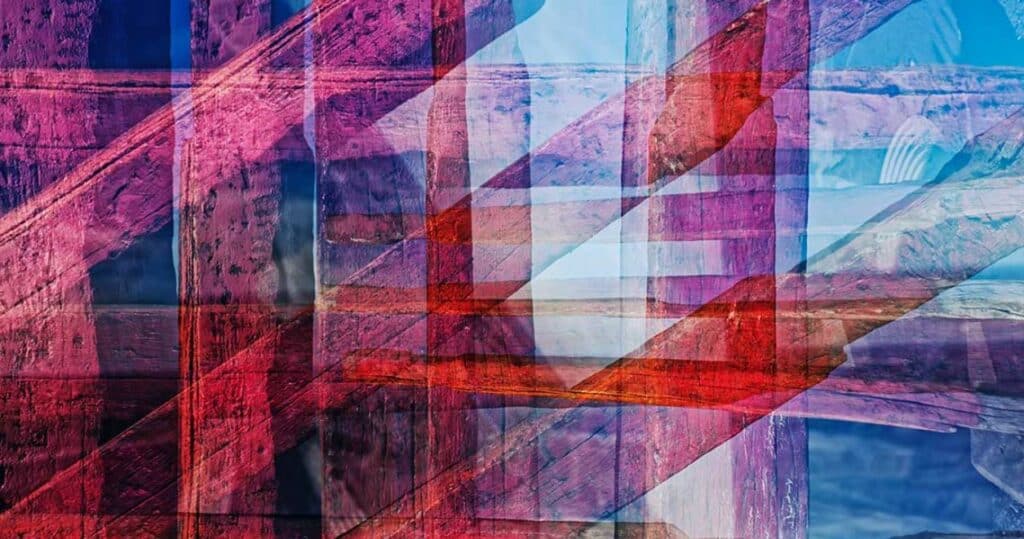“Breaking the Mold: Famous Art Movements That Defied Traditional Boundaries”
In this piece,” Famous Art Movements That Defied Traditional Boundaries”. we will take a tour through ten different art movements that pushed the limits of what was considered acceptable in the art world, thereby helping to shape it into what it is now. These movements, ranging from the Renaissance to Abstract Expressionism, are responsible for starting conflicts, starting conversations, and expanding the notion of what constitutes art.
Art has always been a potent way of expressing oneself, both as a reflection of the times and as a tool to push the boundaries of what is considered normal. Artists have been pushing the boundaries of accepted practices and redefining the parameters of the art world throughout history. These movements have left an indelible mark on the canvas of art history, motivating future generations of artists to explore new boundaries and find inventive ways to express themselves.
In the world of art, the 20th century was a time of huge change and new ideas. Artists broke the rules, pushed the limits, and changed what art could be.Read more
10 Art Movements That Challenged Traditional Norms
It has always been true that art shows what kind of society and culture it comes from. Throughout history, there have been many art groups that went against the grain, pushed the limits, and changed the very nature of what art could be. These art movements changed the way things were done, sparked discussion, and left an indelible mark on the art world. Here, we look at 10 art movements or groups that were brave enough to go against the norm:
1. Renaissance: The Rebirth of Art

The 14th century to the 17th century was the Renaissance. It was a time of huge changes in art, culture, and society. It went against the Middle Ages’ traditional rules and praised humanism, individualism, and innovation. Great artists like Leonardo da Vinci, Michelangelo, and Raphael made works of art that showed how people and nature really looked. Many things that happened during the Renaissance changed the way art is made today.
Key Details: Renaissance
| Aspects | Description |
| Time Period: | 14th-17th Century |
| Notable Artists: | Leonardo da Vinci, Michelangelo, and Raphael |
| Locations: | Italy, Europe |
| Influence: | Humanism, Realism, and Classicism |
| Motive: | Celebrating humanism, creativity |
| Legacy: | Foundation for modern art, classicism |
| popularity: | One of the Very Popular art movements |
2. Romanticism: Embracing Emotion and Imagination

Romanticism started in the late 1700s and pushed people to share their feelings, be themselves, and feel deeply connected to nature. Some artists, like J.M.W. Turner, Caspar David Friedrich, and Eugène Delacroix, made art that praised the beautiful and looked into the complicated ways people feel. The trend went against the rules of classicism and let people make art that was more personal and emotional.
Key Details: Romanticism
| Aspects | Description |
| Time Period: | Late 18th-19th Century |
| Notable Artists: | J.M.W. Turner, Caspar David Friedrich, Eugène Delacroix |
| Locations: | Europe, Worldwide |
| Influence: | Emotion, Nature, Sublime |
| Motive: | Celebrating individual experience |
| Legacy: | Focus on individual emotion, nature |
| popularity: | One of the Very Popular art movements. |
3. Impressionism: Capturing Moments in Time

Impressionism changed art in the middle of the 1800s by breaking with traditional methods and focusing on brief moments. Some artists, like Claude Monet, Edgar Degas, and Pierre-Auguste Renoir, didn’t follow the rules set by their teachers. Instead, they chose to show how light and color changed things in their art. This art movement push tradtional boundaries.
Key Details: Impressionism
| Aspects | Description |
| Time Period: | Mid-19th Century |
| Notable Artists: | Claude Monet, Edgar Degas, Pierre-Auguste Renoir |
| Locations: | France, Europe |
| Influence: | Emphasis on fleeting moments |
| Motive: | Capturing transient beauty |
| Legacy: | New approach to representation, color |
| popularity: | Highly Popular art movement |
4. Surrealism: Unleashing the Unconscious

Surrealism, which began in the early 1900s, was very different from everyday life. Some artists, like Salvador Dalí, René Magritte, and Max Ernst, were interested in dreams, the inner mind, and things that don’t make sense. Surrealism liked the strange and the weird and pushed the limits of what was reasonable. The movement pushed artists to share their deepest feelings and thoughts, opening up new ways for art to be made.
Key Details: Surrealism
| Aspects | Description |
| Time Period: | Early 20th Century |
| Notable Artists: | Salvador Dalí, René Magritte, Max Ernst |
| Locations: | Europe, Worldwide |
| Influence: | Exploration of the unconscious |
| Motive: | Embracing the bizarre, fantastical |
| Legacy: | Influence on modern art, dream imagery |
| popularity: | Popular art movement |
5. Cubism: Fragmenting Reality

Cubism, which was started by Pablo Picasso and Georges Braque in the early 1900s, broke down old ideas about how to show things. It broke things up into geometric shapes and showed more than one point of view at the same time. Cubism questioned the idea of a single point of view. It pushed the limits of how art could be understood and helped to create abstract art.
Key Details: Cubism
| Aspects | Description |
| Time Period: | Early 20th Century |
| Notable Artists: | Pablo Picasso, Georges Braque |
| Locations: | France, Europe |
| Influence: | Fragmentation, multiple perspectives |
| Motive: | Reinterpretation of reality |
| Legacy: | Shaped modern art, abstract art |
| popularity: | Popular art movement |
6. Abstract Expressionism: Emotion on the Canvas

Abstract expressionism became very popular in the middle of the 20th century. Artists like Jackson Pollock, Willem de Kooning, and Mark Rothko used paint in a loose, painterly way to show how they felt and what they had been through. This trend shook up old ways of doing things and let the artist’s true feelings shine through the canvas.
Key Details: Abstract Expressionism
| Aspects | Description |
| Time Period: | Mid-20th Century |
| Notable Artists: | Jackson Pollock, Willem de Kooning, Mark Rothko |
| Locations: | USA, Worldwide |
| Influence: | Spontaneous, gestural expression |
| Motive: | Conveying raw emotions |
| Legacy: | Influential in contemporary art, freedom |
| popularity: | Highly Popular art movement |
7. Pop Art: Reimagining Everyday Objects

Pop art came about in the 1950s and used everyday things and pop culture to make art. Some Famous Artists of Pop Art, like Andy Warhol, Roy Lichtenstein, and Claes Oldenburg, pushed the limits of what art could be by making ordinary things look special. They questioned the line between high and low culture and praised consumerism and mass media in their work.
Key Details: Pop Art
| Aspects | Description |
| Time Period: | 1950s-1960s |
| Notable Artists: | Andy Warhol, Roy Lichtenstein, and Claes Oldenburg |
| Locations: | USA, UK, Worldwide |
| Influence: | Everyday objects, consumerism |
| Motive: | Elevating the mundane, popular culture |
| Legacy: | Influence on consumer culture and mass media |
| popularity: | One of the Popular art movements |
8. Minimalism: Less Is More

When it became popular in the 1960s, minimalism took art down to its most basic parts. To question what people usually think of as complicated in art, artists like Donald Judd, Dan Flavin, and Frank Stella used geometric shapes, simple forms, and an emphasis on materials. The movement showed that art could speak in a clear and simple way.
Key Details: Minimalism
| Aspects | Description |
| Time Period: | 1960s-Present |
| Notable Artists: | Donald Judd, Dan Flavin, Frank Stella |
| Locations: | USA, Worldwide |
| Influence: | Geometric forms, material focus |
| Motive: | Simplicity, purity in art |
| Legacy: | Influential in design, sculpture |
| popularity: | Popular |
9. Postmodernism: Embracing Eclecticism

The idea of a single, universal truth was questioned by postmodernism, which began in the middle of the 20th century and still has an impact on modern art. It makes putting together different styles, ideas, and cultural themes more likely. Ethnicism is something that artists like Jean-Michel Basquiat, Barbara Kruger, and Jeff Koons do. They blur the lines between high and low society and question what people think is normal.
Key Details: Postmodernism
| Aspects | Description |
| Time Period: | Mid-20th Century-Present |
| Notable Artists: | Jean-Michel Basquiat, Barbara Kruger, Jeff Koons |
| Locations: | USA, Worldwide |
| Influence: | Eclecticism, cultural references |
| Motive: | Juxtaposition of styles and ideas |
| Legacy: | Embracing diversity, challenging norms |
| popularity: | Popular |
10. Street Art: Taking Art to the Streets

Street art, which usually starts on the outskirts of cities, pushed the limits of art by being open to everyone. Famous Street Artists like Banksy, Shepard Fairey, and Jean-Michel Basquiat painted on walls in public places to send strong messages and start talks that made people think. Street art went against what people usually thought of as art spaces and opened up new ways to show art.
Key Details: Street Art
| Aspects | Description |
| Time Period: | 20th Century-Present |
| Notable Artists: | Banksy, Shepard Fairey, Jean-Michel Basquiat |
| Locations: | Global (urban environments) |
| Influence: | Public spaces, messages |
| Motive: | Making art accessible to everyone |
| Legacy: | Redefining art spaces, thought-provoking |
| popularity: | Increasingly Popular |
These ten art movements have challenged the conventional conventions of the art world and helped to transform it over the course of history. They have broken the conventions of their day, paving the way for new ways of thinking and putting their ideas into action. These movements continue to encourage artists to break free from norms, investigate new frontiers, and push the boundaries of what is considered to be artistic expression. By doing so, they bring to our attention the fact that art is a living, always-changing reflection of the experiences of humans.
FAQ
For what is the Renaissance art movement famous?
The Renaissance art movement is well-known for its promotion of humanism, individualism, and realistic depictions of the human form and the natural environment. Artists of the time, such as Leonardo da Vinci and Michelangelo, created masterpieces that exemplified these themes.
In what ways did Impressionism challenge conventional art techniques?
Impressionism disrupted established art approaches by emphasizing the capture of light and color effects in a more spontaneous and less detailed manner. Artists like Claude Monet and Edgar Degas abandoned academic standards in favor of a more subjective and instantaneous portrayal of reality.
What is the most distinguishing feature of abstract expressionism?
The use of paint in a spontaneous and expressive manner to express intense emotions and inner experiences is what distinguishes abstract expressionism. This movement emphasizes the emotive and expressive components of art while questioning established techniques and precision.





